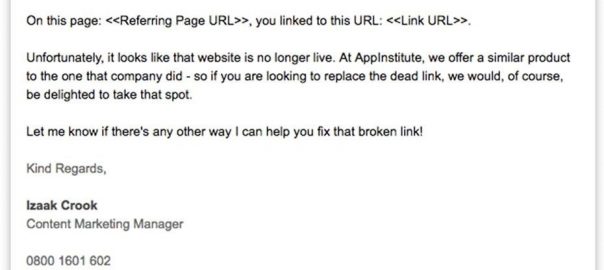
The nature of business is the strong survive and the weak fold, or give up and try something different. But there’s gold in the millions of links to non-trading businesses that smart marketers and companies in the same area can use to their advantage. Follow this guide to see how you can leverage links to failed sites in your line of business to drive traffic to your own company.
You can see how to find and replicate your competitor’s backlinks as a useful strategy in this post. While this technique of finding and taking advantage of links to dead businesses may sound a bit dark, it is a proven strategy. Like turning fossil trees into coal, replacing dead links with live ones provides fire in the form of traffic for your site and improves your own linking ratings.
If you find success with it, a similar, more granular variant is finding 404 pages on the sites of competitors. Getting these sites that link to any dead sites or pages and updating the link to your business content or services can provide great traffic. Just follow the steps to see how this process can benefit your business.
1 Search for competitors in your market or area who no longer exist. You might know of some personally, and high-profile collapses usually make the news. Or, you can find them through directory searches using sites like Crunchbase.com or more local or regional equivalents. If you use Crunchbase, search for companies that are ‘closed’ in their database who have similar keywords in their description to your company’s line of business.
As a tip, make a note of any businesses that you read about or hear are going under. Add them to a list for when you next decide to try this approach.
2. Having tracked down some dead competition, feed in their URL to indexing services such as Ahrefs, Majestic or Moz. Using these tools you can view data like the Domain Authority of the site, and for this exercise, create and export a list of backlinks that went to the now deceased site from functioning companies.
If you don’t regularly use these tools yet, bookmark and explore them to see how valuable they can be for your business.
3. A simple way to proceed is to drop the links into a new spreadsheet, and build up a list of linking domains through formula or macro use to get rid of the longer URL information. You could also use online tools such as URLtoDomain to strip out irrelevant data and create a list of pristine URLs.
4. With this list, you can use a spot of manual research, or if it is a very long list, an email scraper (such as Hunter.io) to find the email contacts of the live websites that still link to the dead business. We will use these emails to contact them and ask to swap the dead link for a live one to your site. Remove any duplicates, and if there are no email contacts, look for people you can reach out to manually on the sites.
5. Using the spreadsheet, create a Yet Another Mail Merge (YAMM) email campaign or use your prefered tool. Craft a form letter similar to the below, and use the custom variables fields to let the site owners know that there is a dead link on their web property! Even in the web-savvy era, it is amazing how many companies don’t know about how dead links can reflect on their business.

6. Depending on the tools you used to create your list, the variables may be different and you can customize the letter as needed to ensure the right approach for your business audience. Remember to perform a test before sending out the actual messages, to check all the fields and data is valid. Also, remember to include an unsubscribe link to the campaign, so that people who do not want to hear from you can let you know.
7. Send the final campaign and wait for the replies and backlinks to start rolling in. Some business owners are naturally suspicious about making changes to their site, but you can refer them to plenty of branded research showing the damage caused by dead links. Given the value of the backlinks, take the time to explain the process and highlight the positives for both sides. For each campaign and interaction, take notes and be prepared to improve your technique for the next time.
While it may take a little time to achieve success, finding links in this way can give you an edge over rivals. This process can also help you build up link sharing opportunities and partnerships with other companies to help benefit both parties. Use the opportunity for a little networking and bridge building.
As with any strategy, there are a few things to look out for. Some companies may be successors to the dead company, and you may not want to be trying to ask a direct rival to trade their links for yours. Check their business and contact details for any similarities.
Also, look out for companies that obviously don’t handle their own web design, they might be rather confused by your approach and may not be able to update the information anyway. Mom and Pop sites could well fall into this category, whatever the line of business.
Finally, as this is a hot tactic, don’t give too much information of the hows and whys to your potential competitors about what you are doing, in case they join in the fun and try to replicate the strategy for their own purposes.
The nature of business is the strong survive and the weak fold, or give up and try something different. But there’s gold in the millions of links to non-trading businesses that smart marketers and companies in the same area can use to their advantage. Follow this guide to see how you can leverage links […]
The post How To Use Your Dead Competitor Domains To Build Quality Links appeared first on Search Engine People Blog.
(43)



